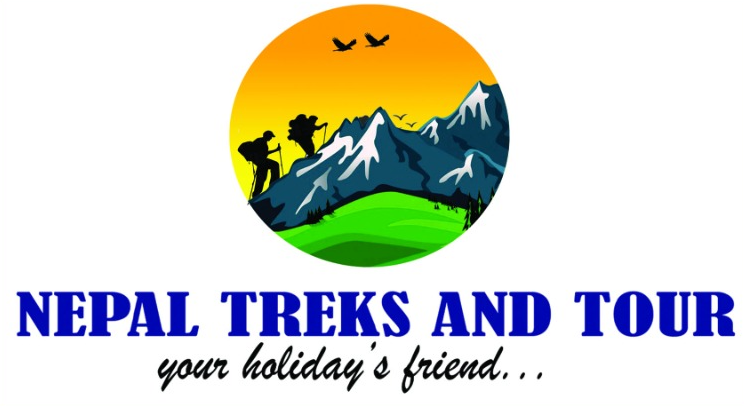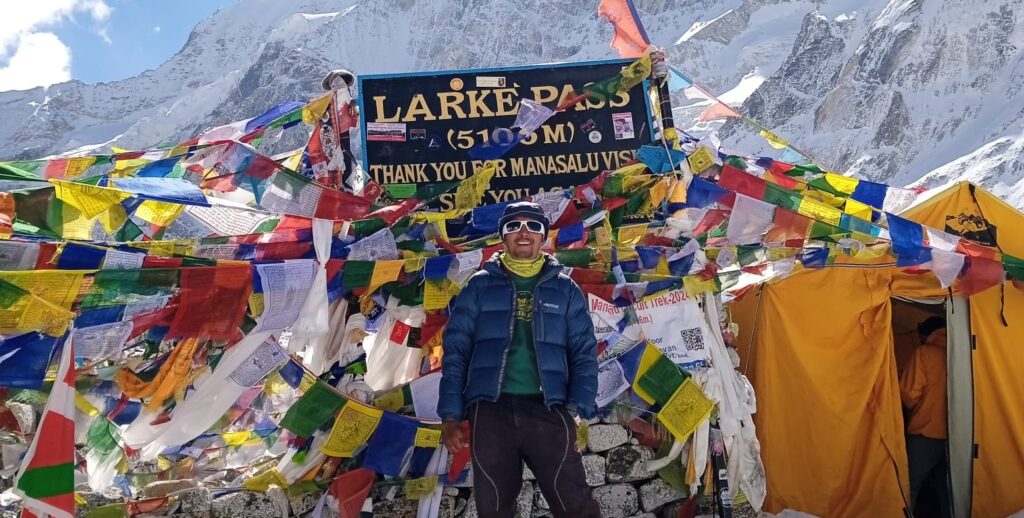Dreaming of a trek that feels like stepping back in time? The Manaslu Circuit trek is a journey for those who seek adventure away from the crowds. This hidden gem in Nepal offers a raw and authentic Himalayan experience, circling the world’s eighth-highest mountain, Mount Manaslu (8,163m).
Unlike the more famous Everest or Annapurna trails, the Manaslu Circuit provides a glimpse into a culture largely untouched by modern tourism. You’ll walk through lush forests, cross dramatic rivers, and pass through ancient Tibetan-Buddhist villages, all while being surrounded by some of the most spectacular mountain scenery on Earth. But to truly enjoy this incredible journey, you need to know the best time for Manaslu Circuit trek.
This comprehensive guide will help you choose the Best Time For the Manaslu Circuit Trek and provide all the practical information you need to plan your trip with confidence.
What is the Best Time to Trek the Manaslu Circuit?
The two main trekking seasons in Nepal are also the best times to do the Manaslu trek: Autumn (September to November) and Spring (March to May). These seasons offer the perfect mix of stable weather, clear mountain views, and comfortable trekking conditions.
Autumn Season (September – November)
This is the most popular time for a reason. After the monsoon rains have cleared the air, the skies become a brilliant, clear blue, providing incredible views of the Himalayas.
Weather: Stable and dry with pleasant daytime temperatures. Nights and mornings are colder, especially at higher altitudes.
Visibility: Excellent. You’ll get stunning, unobstructed views of Manaslu, Himalchuli, and the Ganesh Himal range.
Crowds: This is the busiest season, but the trails are still far less crowded than on the Annapurna or Everest treks.
Spring Season (March – May)
Spring is a close second to autumn and offers a different kind of beauty.
Weather: Warmer temperatures with clear mornings, though afternoon clouds can sometimes build up.
Visibility: Very good. The mountains are visible, and the lower valleys are alive with color.
Nature: This is the time when Nepal’s national flower, the rhododendron, blooms in vibrant reds, pinks, and whites, making the forests a sight to behold.
What to Expect in the Off-Seasons
While less ideal, trekking is possible year-round if you are prepared for the challenges.
Monsoon (June – August): The trails are wet and muddy, with a high risk of leeches and landslides. Mountain views are often blocked by clouds. However, the valleys are incredibly lush and green, and you will have the trail almost entirely to yourself.
Winter (December – February): It gets very cold, and the high Larkya La Pass (5,106m) can be covered in deep snow, making it impassable. This season is only for experienced trekkers who are ready for extreme cold and have flexible schedules.
A Typical 14-Day Manaslu Circuit Trek Itinerary
This is a standard, safe itinerary that allows for proper acclimatization.
Practical Tips for Your Manaslu Circuit Trek
Packing: Pack in layers. A good packing list includes a waterproof and windproof jacket, thermal base layers, a down jacket, and warm socks. Do not wear cotton, as it retains moisture and can make you cold.
Footwear: Invest in a sturdy pair of broken-in hiking boots with good ankle support. A pair of sandals or trainers for relaxing at the teahouse is also a good idea.
Food & Hydration: Drink at least 3-4 liters of water a day to help with acclimatization. The local staple, Dal Bhat, is a fantastic source of energy and is often refillable, making it great value.
Altitude Sickness: The trek goes to a very high altitude. The best way to prevent altitude sickness is to walk slowly, drink lots of water, and allow for a rest day at Samagaon. If you feel any symptoms, do not ascend further.
Accommodation and Cultural Insights During The Manaslu Circuit Trek
Teahouses: The Manaslu Circuit is a teahouse trek, which means you’ll stay in simple lodges run by local families. Rooms are basic with twin beds and shared bathrooms.
Cultural Experience: This trek is a true cultural journey. You’ll see traditional villages, ancient monasteries, and Mani walls (stone carvings with Buddhist prayers). The people you meet, mostly of Tibetan and Gurung descent, are incredibly friendly and welcoming. Remember to walk clockwise around any stupas or prayer walls to respect local customs.
Manaslu Circuit Trek Safety and Permits
Required Permits: The Manaslu Circuit is a restricted area. You need three different permits to complete the trek:
Manaslu Restricted Area Permit (MRAP): The most expensive and can only be obtained through a registered trekking agency.
Manaslu Conservation Area Permit (MCAP): Required for the Manaslu Conservation Area.
Annapurna Conservation Area Permit (ACAP): Required as the trek joins the Annapurna trail for the last few days.
Mandatory Guide: Due to its restricted status, you are not allowed to trek the Manaslu Circuit solo. You must be in a group of at least two trekkers, accompanied by a government-licensed guide.
Cost Breakdown: How Much Does the Manaslu Trek Cost?
The total cost can vary, but a typical 14-day guided trek package from Kathmandu for one person can range from $1,500 to $1,800 USD. This package typically includes:
Permits: A significant portion of the cost.
Guide & Porter: Their salary, food, and accommodation.
Transportation: The jeep or bus ride to and from the trek.
Accommodation: All overnight stays at teahouses.
Meals: Breakfast, lunch, and dinner during the trek.
Note: Tipping your guide and porter is a common practice and an important way to show your appreciation for their hard work.
FAQs about the Manaslu Circuit Trek
1. Is the Manaslu Circuit trek safe?
Yes, the Manaslu trek is considered safe, especially when you are with an experienced, local guide. The remote nature of the trail requires trekkers to be well-prepared and follow the advice of their guide. The biggest safety risks are altitude sickness and the unpredictable weather, both of which can be managed with proper planning, a good itinerary, and an expert guide.
2. Is there Wi-Fi or cell phone service on the trek?
Connectivity is very limited on the Manaslu Circuit trek. While some teahouses in lower villages may offer paid Wi-Fi (which can be slow and unreliable), you should not count on it. Cell phone service is also sporadic and often non-existent in the higher, more remote areas. It is best to plan for a digital detox and enjoy the scenery.
3. What is the difference between Manaslu Circuit and Annapurna Circuit?
The Manaslu Circuit is often called the “new Annapurna Circuit” from 20 years ago. Here’s a quick comparison:
Crowds: Manaslu is far less crowded. You will see a fraction of the trekkers compared to the Annapurna Circuit.
Culture: Manaslu is a more remote and culturally authentic trek, with a strong Tibetan-Buddhist influence, especially in the upper region.
Roads: While the Annapurna Circuit has been heavily affected by a motor road, the Manaslu Circuit remains largely untouched by roads, offering a more pristine trekking experience.
Difficulty: Both treks are challenging, but the Manaslu Circuit is considered slightly more difficult due to its remoteness and more basic facilities.
4. How long does it take to complete the trek?
The classic Manaslu Circuit trek takes 12-14 days. This is the recommended duration to allow for safe acclimatization. You can extend the trek by adding the Tsum Valley side trip, which adds another 4-5 days to your journey.
5. What kind of gear should I pack?
Packing smart is key. Your packing list should include:
Clothing: Layers are essential. Bring a waterproof and windproof outer shell, a warm down jacket, thermal base layers, and moisture-wicking trekking shirts. Avoid cotton!
Footwear: Sturdy, broken-in trekking boots with good ankle support are a must.
Sleeping Bag: A quality sleeping bag rated for temperatures as low as -10°C is highly recommended, as nights can be very cold, even inside teahouses.
Other Essentials: A headlamp with extra batteries, a power bank for charging, a water bottle with purification tablets, and a basic first-aid kit.
6. Do I need travel insurance for the trek?
Yes, travel insurance is mandatory and non-negotiable. Your policy must cover high-altitude trekking (up to 6,000m) and include helicopter rescue and emergency evacuation. This is a crucial safety precaution due to the remote nature of the trail.
7. What about ATMs and money on the trek?
There are no ATMs on the Manaslu trek. The last place to withdraw cash is in Arughat or Soti Khola at the start. You will need to carry enough Nepali Rupees for your entire trip, including food, drinks, and tips. Carry a good amount of small bills.
8. Is it possible to combine the Manaslu and Tsum Valley trek?
Yes, it is a very popular option. The Tsum Valley trek is a spiritual and cultural side trip that takes you to a beautiful, isolated valley with ancient monasteries and unique traditions. Combining both treks gives you a deeper insight into the local culture and offers an even more remote experience.
9. What are the best months for the trek?
The best months are October and November in the autumn season, and April and May in the spring season. These months offer the most stable weather and the clearest mountain views, making for a perfect trekking experience.
10. Can a beginner do the Manaslu Circuit trek?
While the trek is rated as moderately difficult, it is achievable for a reasonably fit beginner. You don’t need technical climbing skills, but you should be able to walk for 6-8 hours a day on hilly terrain. We recommend starting a fitness routine at least 2-3 months before the trek.
11. What is the accommodation like on the trek?
Accommodation is in local teahouses and is basic but comfortable. Rooms usually have two single beds and a shared bathroom. As you go higher, facilities become simpler. The dining rooms are cozy and warm with a central fire where trekkers gather.
12. Are there any other alternative treks in the Manaslu region?
Yes, besides the main circuit, you can do a side trip to the beautiful Tsum Valley. It is a restricted trekking area that requires a separate permit, but it is a worthwhile addition for those who want an even more secluded cultural and spiritual journey.
Ready to take on this incredible, once-in-a-lifetime adventure? Our team of local Nepali experts at Nepal Treks and Tour is ready to help you plan a safe and memorable journey.
Contact us today to book your Manaslu Circuit trek and discover the true heart of the Himalayas!







